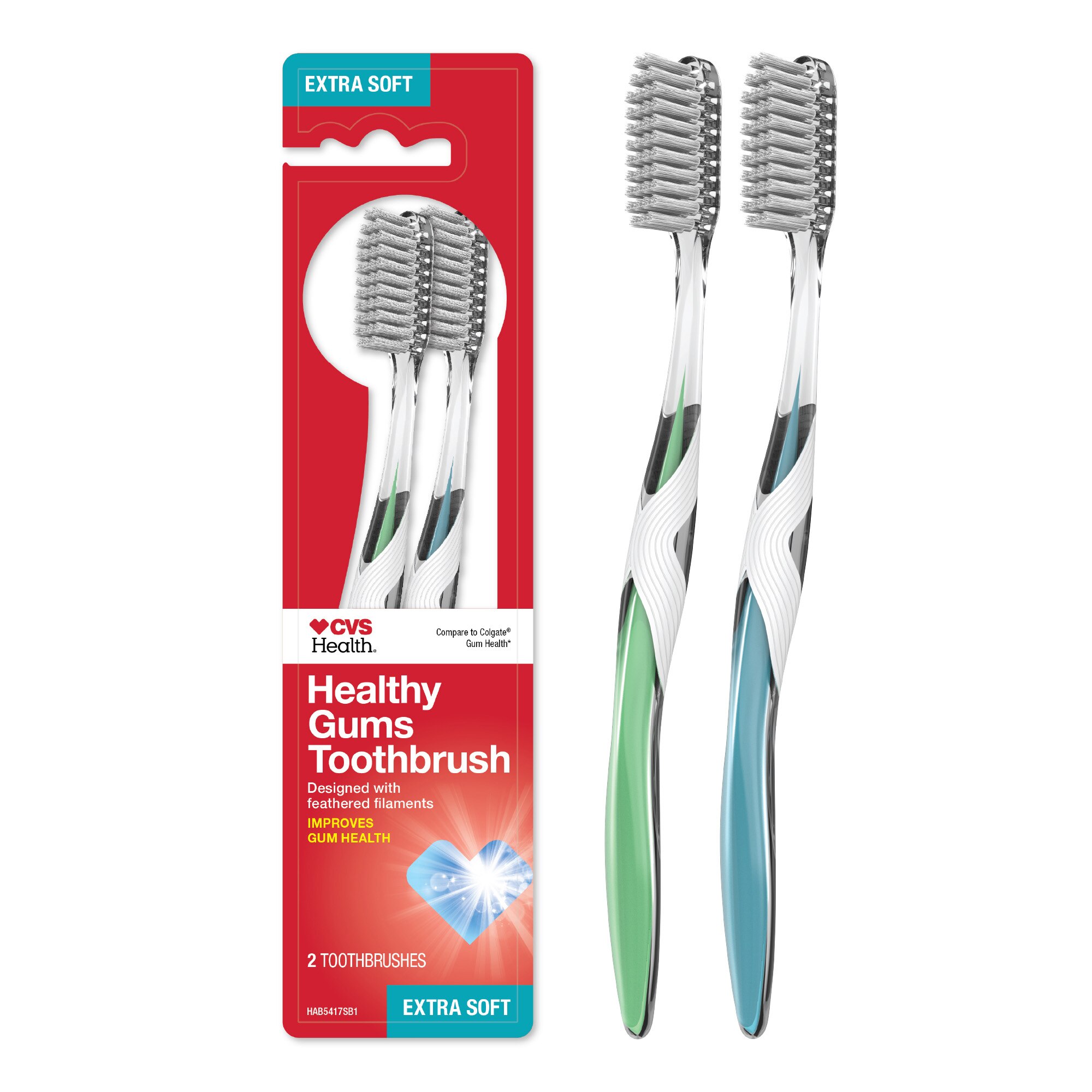12+ Super Soft Toothbrush Secrets For Healthy Gums

When it comes to maintaining healthy gums, one of the most overlooked yet crucial tools is the humble toothbrush. Specifically, using a super soft toothbrush can make a significant difference in preventing gum recession, reducing inflammation, and promoting overall oral health. Here, we’ll delve into the secrets of super soft toothbrushes and how they can be your first line of defense against gum problems.
Understanding Gum Health
Before we dive into the world of toothbrushes, it’s essential to understand why gum health is so critical. Your gums are the foundation of your teeth, and when they’re healthy, they provide a snug, protective seal around your teeth. However, when gums become inflamed or infected, it can lead to conditions like gingivitis and periodontitis, which can cause pain, bad breath, and even tooth loss if left untreated.
The Problem with Regular Toothbrushes
Regular toothbrushes, especially those with hard bristles, can sometimes do more harm than good. The hard bristles can scratch and damage the gums, leading to inflammation and recession over time. This is particularly problematic for individuals with sensitive gums or those who brush their teeth aggressively.
Introduction to Super Soft Toothbrushes
Super soft toothbrushes are designed with extra-soft bristles that aregentle on the gums. These toothbrushes are not just for individuals with sensitive teeth and gums but can be beneficial for anyone looking to maintain good oral health. The soft bristles are less likely to cause irritation and can help in preventing gum recession.
Secret 1: Choose the Right Bristle
The first secret to utilizing a super soft toothbrush effectively is choosing the right bristle type. Look for toothbrushes labeled as “super soft” or “extra soft.” These bristles are designed to be gentle on your gums while still effective at cleaning your teeth.
Secret 2: Proper Brushing Technique
It’s not just about the toothbrush; how you brush your teeth also matters. Use gentle circular motions to clean your teeth, and avoid using too much force, which can still damage your gums even with a super soft toothbrush.
Secret 3: Brush Frequency and Duration
Brushing your teeth twice a day for about two minutes each time is recommended. Overbrushing can lead to gum irritation, regardless of the toothbrush type. Using a super soft toothbrush and adhering to the recommended brushing frequency and duration can help maintain healthy gums.
Secret 4: Regular Replacement
Toothbrushes, including super soft ones, should be replaced regularly. The American Dental Association recommends replacing your toothbrush every three to four months or sooner if the bristles become frayed. A worn-out toothbrush can be less effective and may even start to harbor bacteria.
Secret 5: Combining with Other Oral Care Practices
While a super soft toothbrush is an excellent tool for gum health, it’s just one part of a comprehensive oral care routine. Don’t forget to floss daily to remove food particles and plaque from between your teeth and under your gumline, and use an antibacterial mouthwash to reduce bacteria and freshen your breath.
Comparative Analysis: Manual vs. Electric Super Soft Toothbrushes
When it comes to super soft toothbrushes, you have the option between manual and electric models. Both types have their advantages. Manual toothbrushes are inexpensive, easy to use, and require no charging, making them a great choice for travel. Electric toothbrushes, on the other hand, can provide a more thorough cleaning, are often equipped with timers to ensure you brush for the full recommended time, and can be more effective at removing plaque.
Expert Perspective: Dentists’ Recommendations
Dentists often recommend super soft toothbrushes for patients with gum sensitivity or those who are at risk of gum disease. According to dental expert, Dr. [Name], “Using a super soft toothbrush is one of the simplest yet most effective ways to protect your gums. It’s a preventive measure that can save you from more severe gum problems down the line.”
Thought Experiment: A World Without Gum Disease
Imagine a world where gum disease is a rarity. While we’re not there yet, the widespread adoption of super soft toothbrushes could significantly reduce the incidence of gum-related issues. By making this simple switch, individuals can take a proactive step towards oral health, reducing the need for costly and sometimes painful dental procedures.
Future Trends: Innovations in Toothbrush Technology
The future of oral care is looking brighter than ever, with ongoing innovations in toothbrush technology. From toothbrushes with built-in plaque sensors to those that can sanitize themselves, the potential for improvement is vast. One exciting area of development is in nanotechnology, where researchers are exploring how ultra-fine bristles can be designed to clean teeth more effectively without damaging gums.
Historical Evolution: Toothbrushes Through the Ages
The concept of the toothbrush has been around for thousands of years, evolving from twigs with frayed ends to the sophisticated, super soft toothbrushes we use today. Understanding this evolution can give us insight into how our ancestors valued oral health and how we’ve come to develop more effective tools for maintaining healthy gums.
Technical Breakdown: The Science of Super Soft Bristles
The bristles in super soft toothbrushes are made from nylon or polyester and are designed to be incredibly fine. The manufacturing process involves carefully cutting and rounding the bristle tips to ensure they are smooth and won’t scratch gum tissue. This meticulous attention to detail is what makes super soft toothbrushes so effective at cleaning teeth without causing irritation.
Decision Framework: Choosing the Best Super Soft Toothbrush
With so many options available, choosing the right super soft toothbrush can seem daunting. Here are some key factors to consider: - Bristle Softness: Ensure the toothbrush is labeled as “super soft” or “extra soft.” - Head Size: A smaller head can be easier to maneuver around your mouth, especially for cleaning the back sides of your molars. - Handle Comfort: Choose a toothbrush with a comfortable handle that fits well in your hand. - Additional Features: Consider if you want features like a built-in timer or Bluetooth connectivity to track your brushing habits.
Step-by-Step Guide to Using a Super Soft Toothbrush
- Select Your Toothbrush: Pick a super soft toothbrush that meets your needs.
- Apply Toothpaste: Place a pea-sized amount of toothpaste on your toothbrush.
- Brush Your Teeth: Gently brush your teeth in circular motions, making sure to cover all surfaces.
- Focus on Gumline: Pay special attention to the gumline, using gentle strokes to clean this sensitive area.
- Brush Your Tongue and Roof of Mouth: Don’t forget to gently brush your tongue and the roof of your mouth to remove bacteria and freshen your breath.
- Rinse: Rinse your mouth and toothbrush with water.
Myth vs. Reality: Common Misconceptions About Super Soft Toothbrushes
- Myth: Super soft toothbrushes are not as effective at cleaning teeth as regular toothbrushes.
- Reality: Super soft toothbrushes are designed to be gentle on gums while still providing a thorough cleaning. The key is proper brushing technique.
- Myth: You should brush your teeth as hard as you can to get them clean.
- Reality: Brushing too hard can damage your gums and tooth enamel, regardless of the toothbrush type. Gentle brushing is always recommended.
Conclusion
Super soft toothbrushes are a simple yet powerful tool in the fight against gum disease and for maintaining overall oral health. By understanding the benefits, proper usage, and incorporating them into a comprehensive oral care routine, individuals can take significant steps towards preventing gum-related issues. Whether you’re looking to protect your gums, reduce sensitivity, or simply ensure you’re doing everything you can for your teeth, making the switch to a super soft toothbrush could be one of the best decisions you make for your oral health.
FAQ Section
What are super soft toothbrushes, and how are they different from regular toothbrushes?
+Super soft toothbrushes have bristles that are gentler on the gums compared to regular toothbrushes. They are designed for individuals with sensitive gums or those looking to prevent gum recession and promote overall oral health.
Can super soft toothbrushes be used by everyone, or are they recommended for specific oral health conditions?
+While super soft toothbrushes are particularly beneficial for individuals with sensitive gums or gum disease, they can be used by anyone looking to maintain healthy gums and prevent oral health issues. They are a preventive measure that can be incorporated into daily oral care routines.
How often should I replace my super soft toothbrush?
+It’s recommended to replace your toothbrush, including super soft ones, every three to four months or sooner if the bristles become frayed. This ensures your toothbrush remains effective and doesn’t harbor bacteria.
Can super soft toothbrushes help with gum recession?
+Yes, super soft toothbrushes can help prevent further gum recession by being gentler on the gums. However, for existing gum recession, it’s essential to consult with a dentist for professional advice and treatment. Preventive measures like using a super soft toothbrush can be part of a broader strategy to protect your oral health.
How do I choose the best super soft toothbrush for my needs?
+When choosing a super soft toothbrush, consider factors like bristle softness, head size, handle comfort, and any additional features you might find useful, such as a built-in timer. Reading reviews and consulting with a dental professional can also help you make an informed decision.

